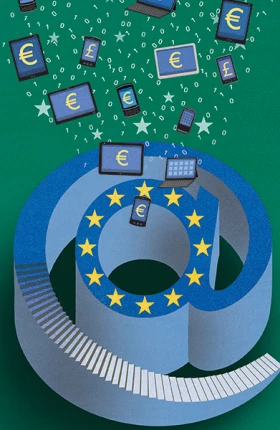The Internet has been heralded as a global “network of networks,” but it is increasingly acquiring local character springing from the economic, political, and social factors that distinguish individual nations. To generate a more nuanced picture of the depth and reach of digital activity across countries, The Boston Consulting Group created the BCG e-Intensity Index. It examines Internet activity for the members of the Organisation for Economic Co-operation and Development (OECD), for the BRICI nations of Brazil, Russia, India, China, and Indonesia, and for other noteworthy economies, such as Hong Kong, Saudi Arabia, Singapore, and South Africa.
Simon Targett, BCG’s editor in chief, spoke with Paul Zwillenberg, a BCG partner and managing director, about the creation of the index and its utility for executives and policy makers.
You created the BCG e-Intensity Index. What is it, and why have you launched it?
Policy makers and business leaders want to know how different countries rank in terms of their “Internet intensity”—in other words, the depth and reach of their digital activity.
Related Content
Related Content
Interactive: BCG e-Intensity Index
The BCG e-Intensity Index measures Internet strength and activity across 50 nations.
The BCG e-Intensity Index measures both a nation’s supply of Internet infrastructure and its demand for and use of Internet services. Specifically, it measures enablement: how well built is the infrastructure and how available is Internet access? It measures expenditure: how much money is spent on online retail and online advertising? And it measures engagement: how actively are businesses, governments, and consumers embracing the Internet?
What are the top rankings?
South Korea comes out on top, powered by super-high-speed infrastructure, a well-developed e-commerce and digital-advertising marketplace, and high levels of Internet engagement. Denmark, Sweden, the U.K., and Iceland round out the top five places. The U.S.—the so-called birthplace of the Internet—has the tenth highest score. (See Exhibit 1.)
The index becomes even more interesting when you dig below the surface. The U.S., for example, leads on the overall Internet engagement score, while Denmark tops the charts on expenditure and Hong Kong on enablement. (See Exhibit 2.) And while developing nations rank near the bottom, they have pockets of innovation and advanced usage.
The Internet is a global network, yet you have found remarkable differences among countries. How can companies capitalize on the localized nature of the Internet?
The Internet is taking on different local flavors that are a reflection of—or a response to—the physical world. In the U.K., traditional shops have embraced the Internet, creating a nation of “digital shopkeepers,” while in the Czech Republic, online-only retailers are filling a void created by the underdevelopment of traditional retail channels. Hong Kong, with its well-established retail footprint, has a low level of online sales given the quality of its broadband infrastructure but a higher level of business-to-business e-commerce. The BCG e-Intensity Index helps companies calibrate their business plans to national levels of consumer, business, and government engagement and the share of fixed versus mobile penetration.
Are there lessons for policy makers, too?
The Internet is driving economic growth. Policies that encourage Internet penetration and usage and that provide protections for customers making online purchases are critical. Policy makers should also be encouraging all businesses—not just high-tech companies—to embrace the Internet. In the U.K., small- and medium-size companies that make active use of the Internet grow seven times faster than companies that do not. Because the Internet is so far-reaching, officials from a number of different agencies, especially those regulating telecom, banking, commerce, and consumer affairs, will need to cooperate and coordinate their efforts. This is especially true in developing nations.
What is the one key takeaway from this work?
The Internet is adopting the local character and personality of its users. In China and Russia, where English is less prevalent, local entrepreneurs are developing giant Internet businesses that spark envy in Silicon Valley. In countries such as India and Indonesia, the mobile phone has become the gateway to the Internet. Many of the most popular and useful mobile applications and services are emerging in these countries. In India, for example, the first bank account for many consumers may well be a mobile one. The Internet has truly gone native.







